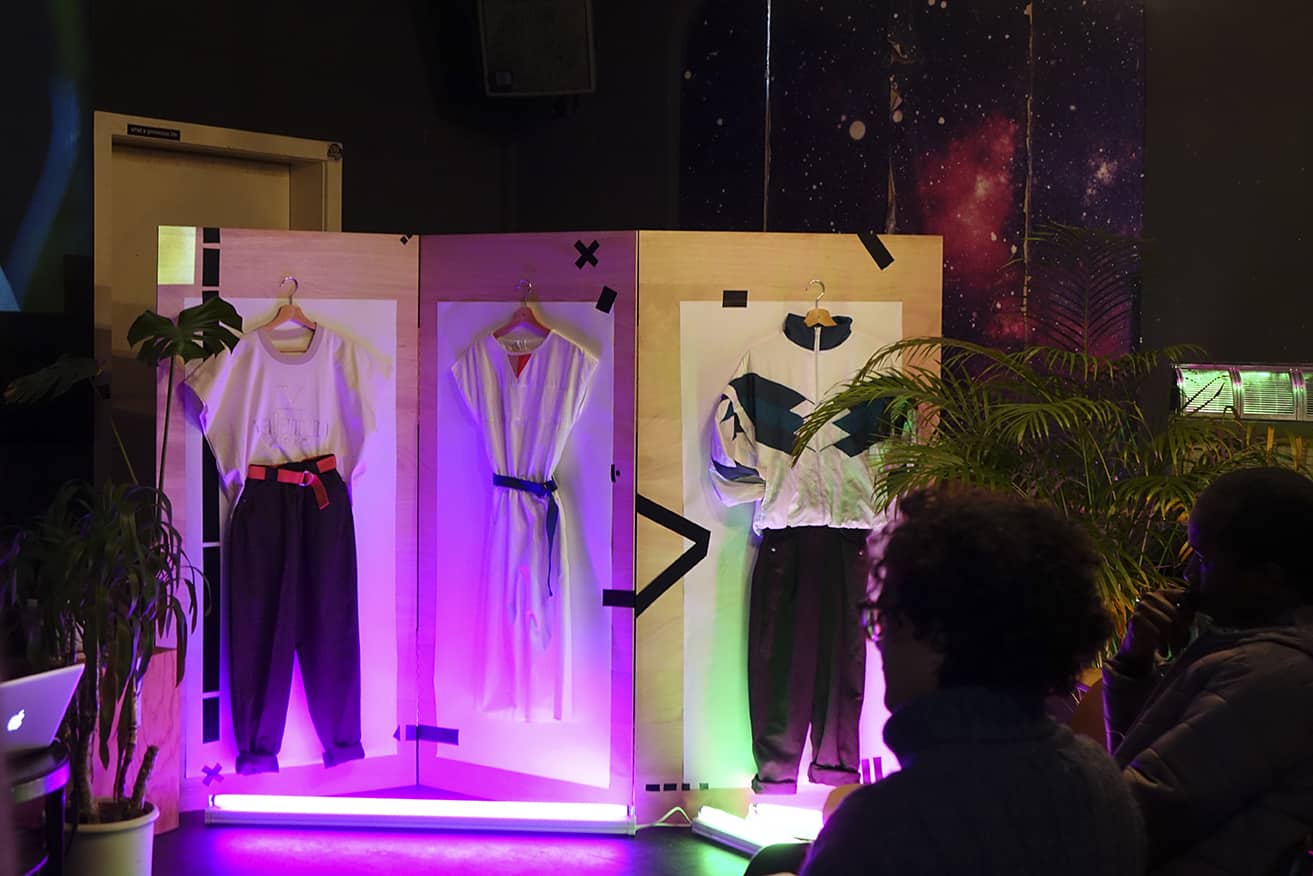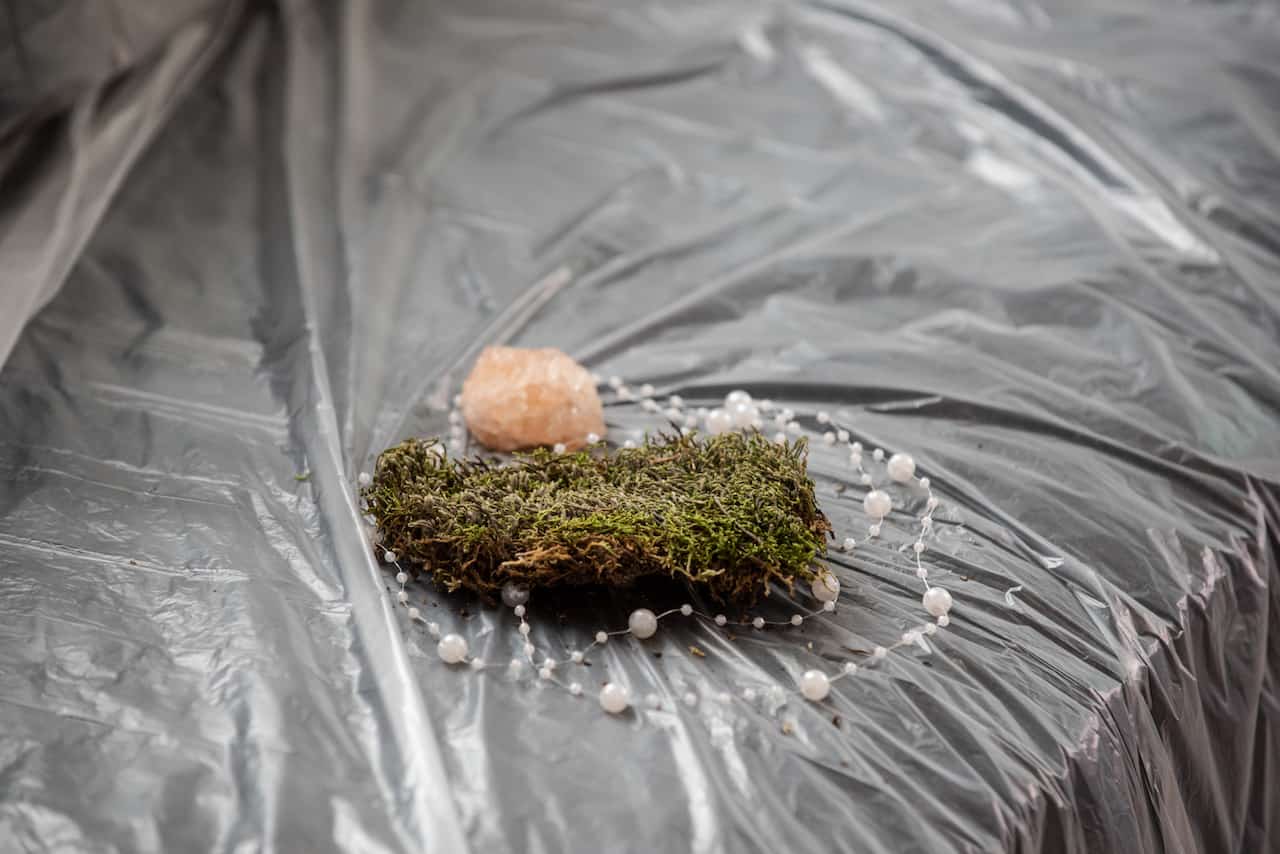Edith Lázár is a fashion theorist and art writer based in Cluj-Napoca in Romania. Currently, she is a fellow in the residency program of Akademie Schloss Solitude, Stuttgart (Fashion Theory/Design), where she explores the ways of writing that merge theory, literature and journalism. Her soft spots are science fiction and speculative design.

Edith Lazar
How did you find out about the residency programme? How did you apply?
I found out about the Akademie Schloss Solitude residency from a former fellow, Taietzel Ticalos. She is a digital media artist, and we’ve collaborated while I was a part of an artistic collective running the Superliquidato art space in Cluj-Napoca. You see, the digital art scene in Romania was, and is, quite small. At that point, we’ve had something of an internal network between artists and friends, a Cluj – Bucharest connection, meaning that we’ve mostly shared residency calls, technical tips, texts, and ideas. I wanted foremost to see how this process of applying functions, and what it requires. It was also an excellent excuse to bring together my thoughts on fashion theory, fiction, artistic practices, and technology.
What does your regular art residency day look like?
Most of the time it starts early, around 8 am with a coffee, non-spiritual yoga for my back, and maybe a walk. But this should not lead anyone into thinking I am a disciplined person. Set in an 18th siècle castle (Duke Carl Eugen’s summer residency), the residency is surrounded by a baroque garden that has outgrown itself into a messy forest. Designed by accident, hence my fascination for it. Other than that, it’s an ongoing melodrama, where I aim to write a text and end up reading unrelated materials and watching documentaries. I love the processes of learning more than the processes of production, and I’m not making schedules because I can rarely follow them.

Edith Lazar – Dressed.In Surfacing Fictions – decorum and performative lecture. Photo: Anna-Lena Niele, Engaging with History fest, March 2019
Tell us about the work/project on which you are working right now?
Right now, I’m working on SKIN45^ which is a non-linear piece of writing and audio-text, for which I’m using storytelling as a medium to address our relationship with technology and the body. The fragments bring together discussions about algorithms and their influence on our ways of living, thinking, and the way touch still holds a transformative potential. It’s a way of reframing. I’ve been interested in the social and political threads that are interwoven into our clothes, for which fashion and design create other rearrangements. Because of fashion’s ability to shape and re-shape collective memory, it’s ultimately a means to stretch the past into the present, but also to open a discussion about possible futures. It functions more like a mind map or something of a constellation that tackles labour conditions, waste issues, and my own upbringing in an Eastern European country. I’m also expanding the text and creating a decorum/ installation that encourages listening. I see it as an open process, so I still have some difficulties in framing it properly.
In your experience, what distinguishes working as part of a residency from working on a daily basis?
I don’t have much experience with residencies in the first place. What I can say is the approach I have to my own work has become slightly structured. Ideally, a residency will make you focus on a particular project, which is not my case, since I’m inclined to a cross-pollination manner of working. But I think it’s related to a sort of distancing from everyday routine that allows other forms of interaction and exchange. I came to believe that residencies function as what Michel Foucault would call ‘heterotopias’ – spaces on the margins of our own, creating their order and rhythm. We get to live in a bubble or incubation capsule, temporarily.

Akademie Schloß Solitude. Sommerfest 2019
Does the change of context help in your research?
Yes, very much. I do feed on that enthusiasm of newness and the influence a new place has on me, for better or worse. Like with a piece of writing, you have to move around from the desk to the kitchen table, to the couch or onto your favourite cushion, to keep the flow going. I’ve started a travelogue on exhibitions at the intersection of design, fashion, and artistic practices for the digital platform of the residency, Schloss-Post. It’s an exhilarating experience to just travel around, see shows that time-wise, and financially, would have been difficult for me to reach. And then to piece things together in a residency that still holds to be a new environment.
Do you place an emphasis on your work or rather on meeting people and networking, finding new materials for your research/articles?
I do enjoy processes of learning and all those ideas that are not-yet projects. Conversations are a big part of it. But I like networking when I don’t have to think about it as such, otherwise socialising in that performativity of work seems to be an excruciating process, and I prefer to retreat.

Akademie Schloß Solitude. Sommerfest 2019
What challenges and opportunities did the residency involve?
It’s called ‘solitude’ for a reason. The residency is in a remote area, and Stuttgart is not the most tempting of cities in the first place. Having too much time on your own can be at times an intense experience, though I ended up enjoying the process of reflection that comes with it. I’m part of the curatorial collective Aici Acolo that activates unused spaces in Cluj-Napoca, and a collective always has some specific dynamics. Since we are also friends, it was interesting to experiment with the ways of putting things together by myself, while also having their support. The residency allowed me the time to conceive and show installations without the pressure of finding a space or having to justify this transfer from text into other media. And the community of fellow residents is ever so vibrant and brings together people with a very diverse cultural background and practices. You get a mix of feedback and suggestions. That, for me, has been both the best thing and the biggest challenge. There’s a sort of emotional stress in having to say ‘good-byes’ to people you’ve made friends with and rely on.
Name three objects which are the most important to you during a residency.
A coffee machine, a laptop, and my notebook, with no particular order – they all fit in my favourite backpack.
What is the role of an institution in your residency? What does it provide you with?
Akademie Schloss Solitude functions as an institution that doesn’t want to act like an institution. In this sense, it’s more of a subtle mediator that provides a transdisciplinary context and a very diverse community. They’ve been active for over 30 years and are still a good model of residency that doesn’t push artists, researchers or writers into production-mode. There’s a beautiful setting you get to live in, you have a monthly stipend as well as a budget that you can easily access, discuss, and get advice for. You get a carte blanche for your way of thinking and ideas, in the first place. It works well because I think most of us active in the cultural field tend to push our boundaries anyway.

Akademie Schloß Solitude. Sommerfest 2019
What would you recommend to others going abroad for a residency?
To give themselves time to adjust to a new environment and try to not fall into self- exploitation mode. Maybe also resist the urge to prove themselves head-on. There’s always an exchange between artists and residency programs, in the sense that residents make the residency as well. The image capital flows both ways. It’s a good thing to remember. Being abroad is always thought-provoking; the differences in ways of life find their way into your way of thinking. Ultimately a residency is another way of looking at things. And when blue, call best friends, they know what to do.
But as one Brazilian fellow once told me: If advice were of any good, people wouldn’t give them so easily for free.

Studio, Mind Maping
ART RESIDENCY: In this series of interviews we ask artists and creative professionals what art residencies mean to them and what benefits they bring to both sides. There is a wide range of art residencies available and it is crucial to make artists aware of such possibilities, recommend the most interesting ones, and allow art practitioners to share their experiences. Alongside the interviews, we also publish articles with selected open calls from around the world, and run a Facebook Group “Open calls/Residencies/Opportunities for artists” where the arts community can share more opportunities and experiences.










